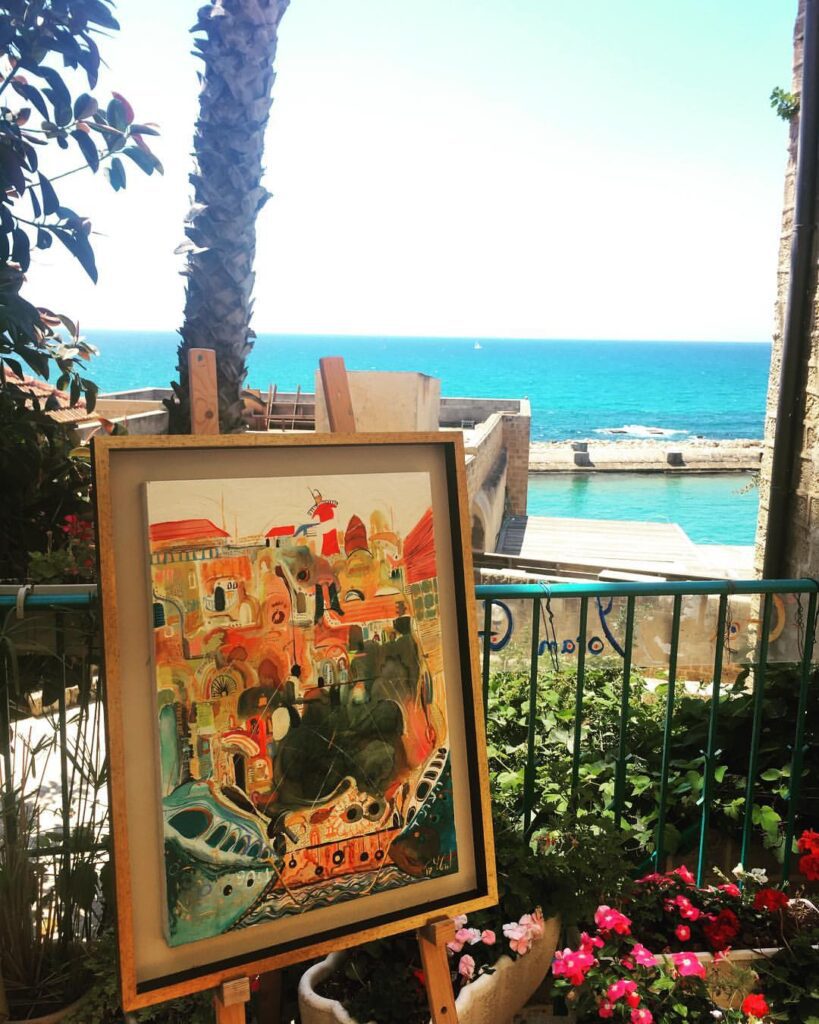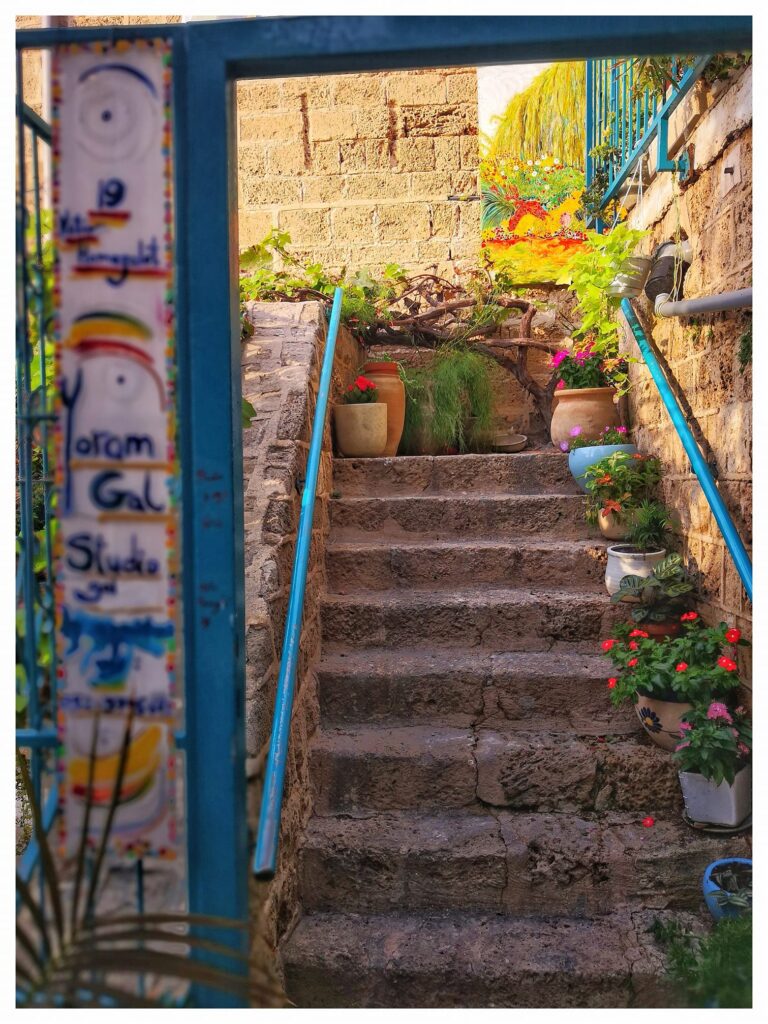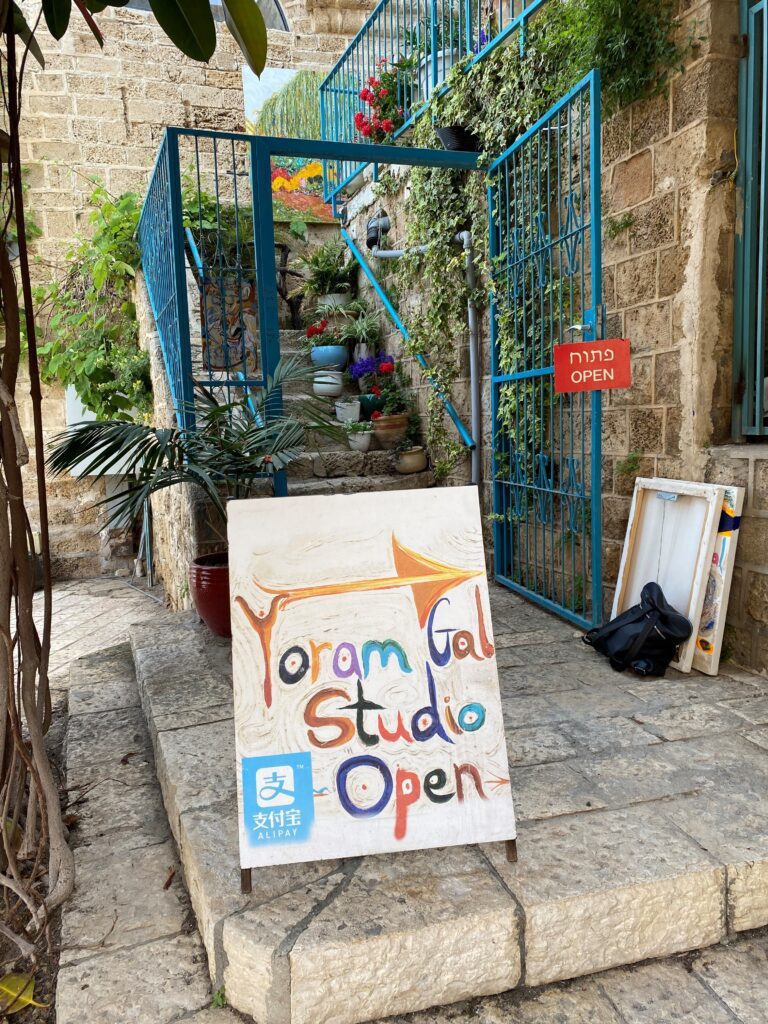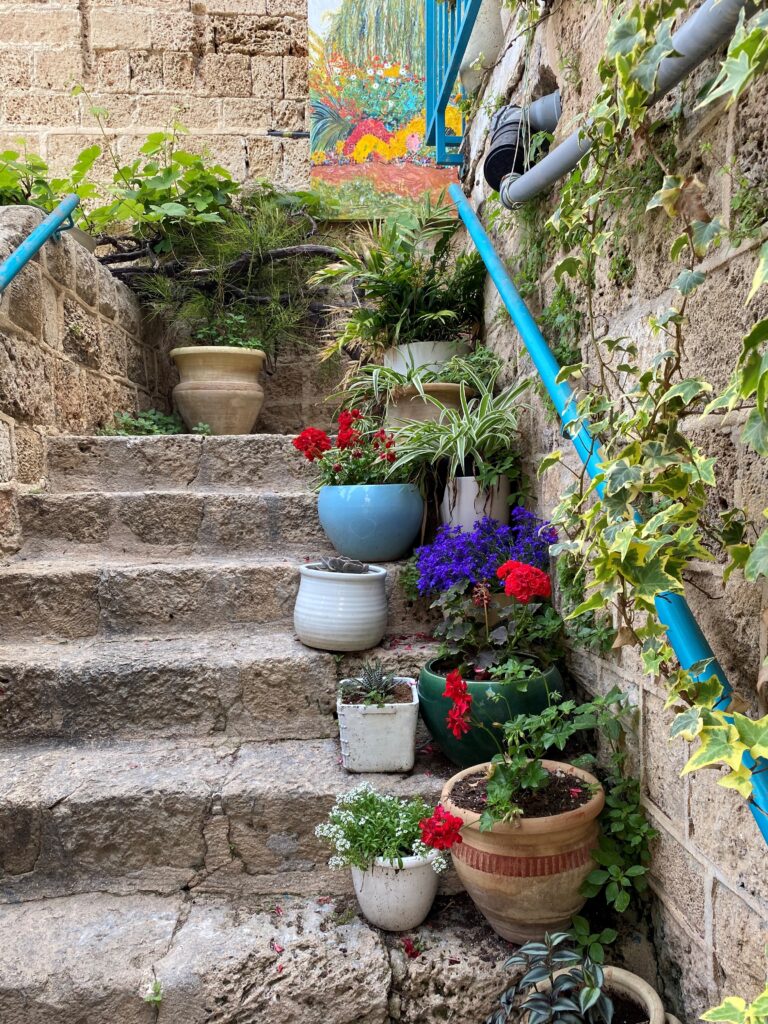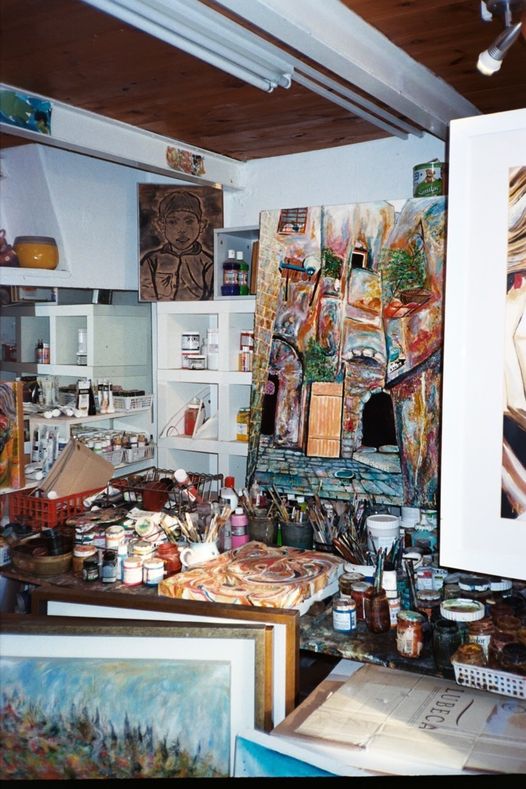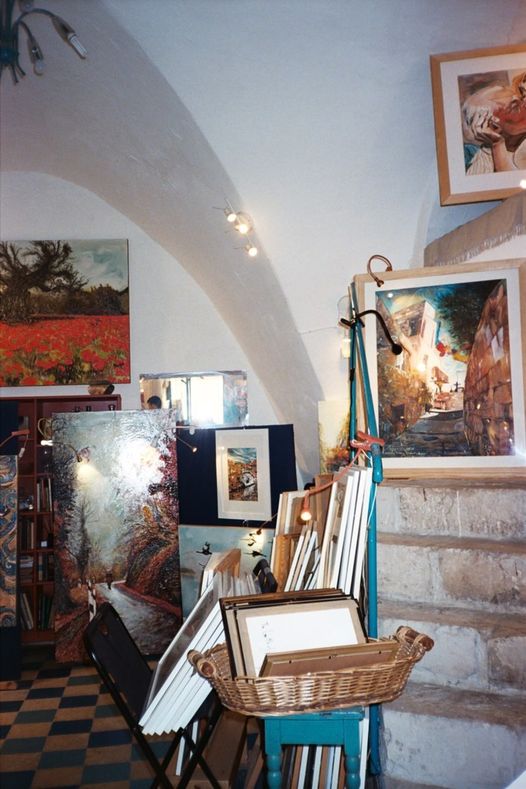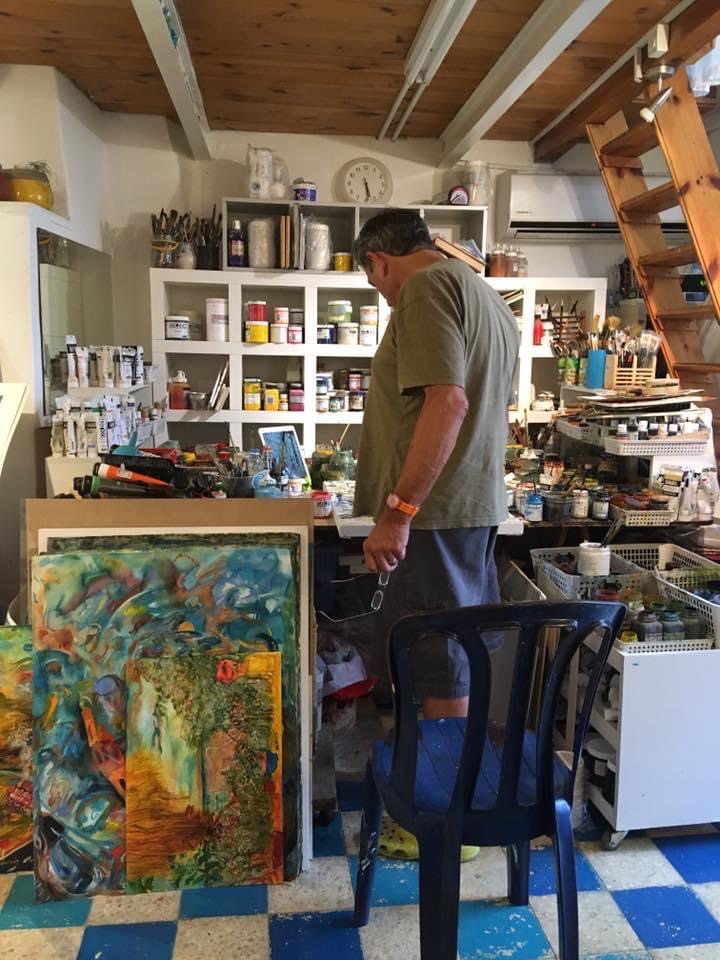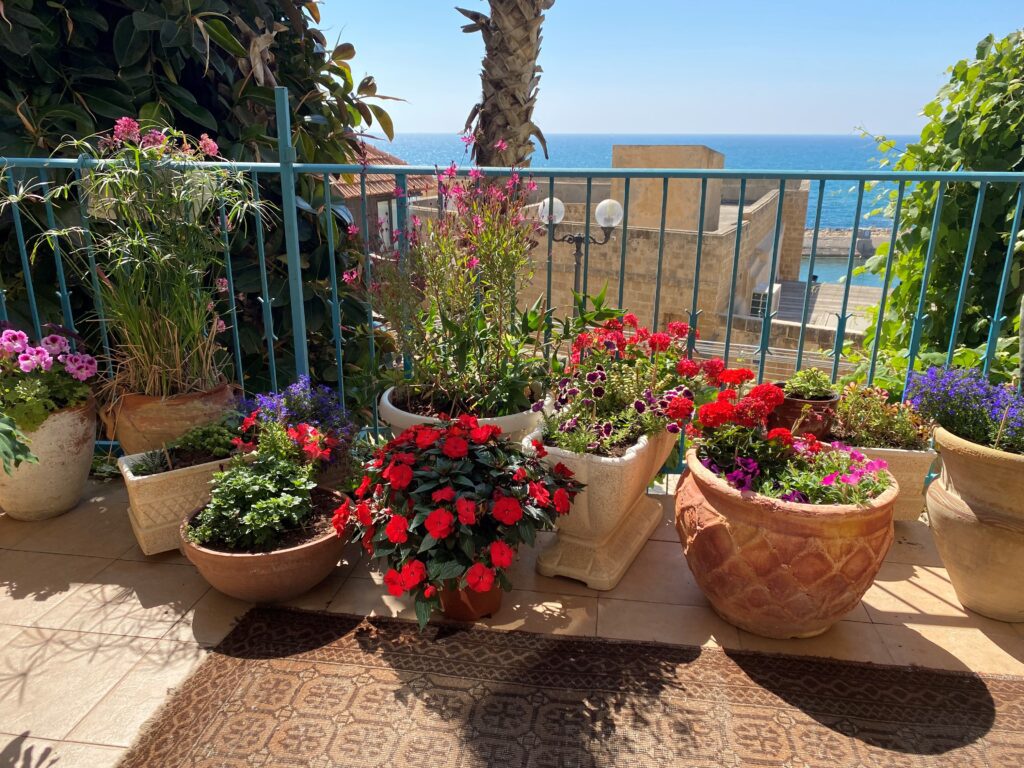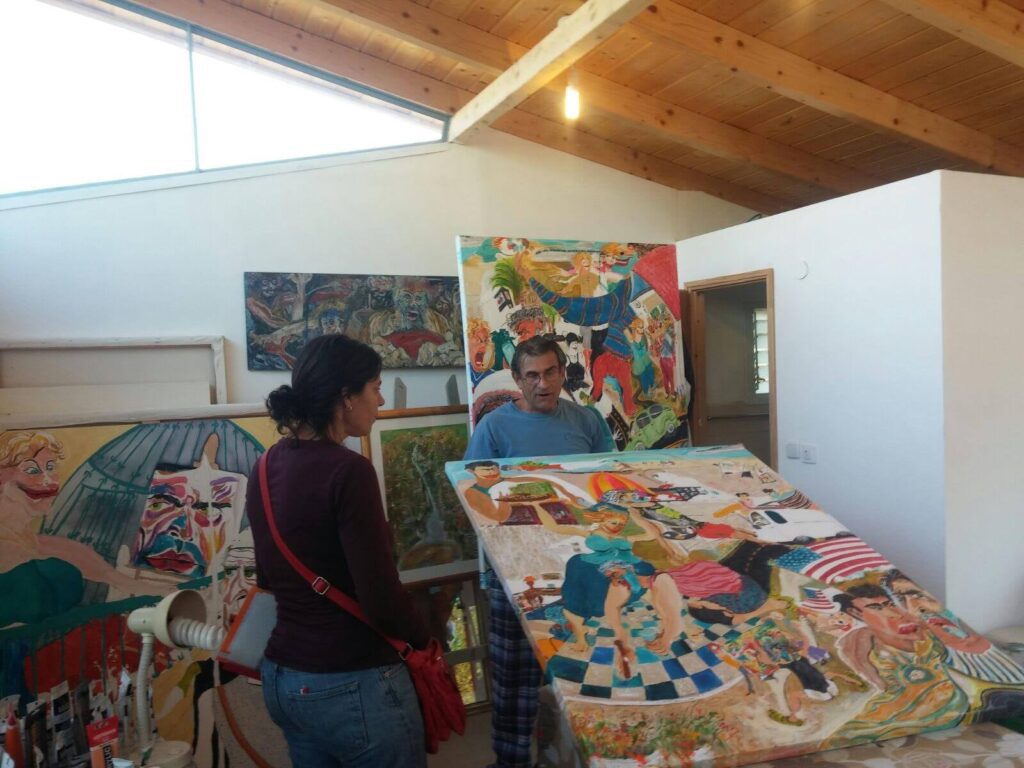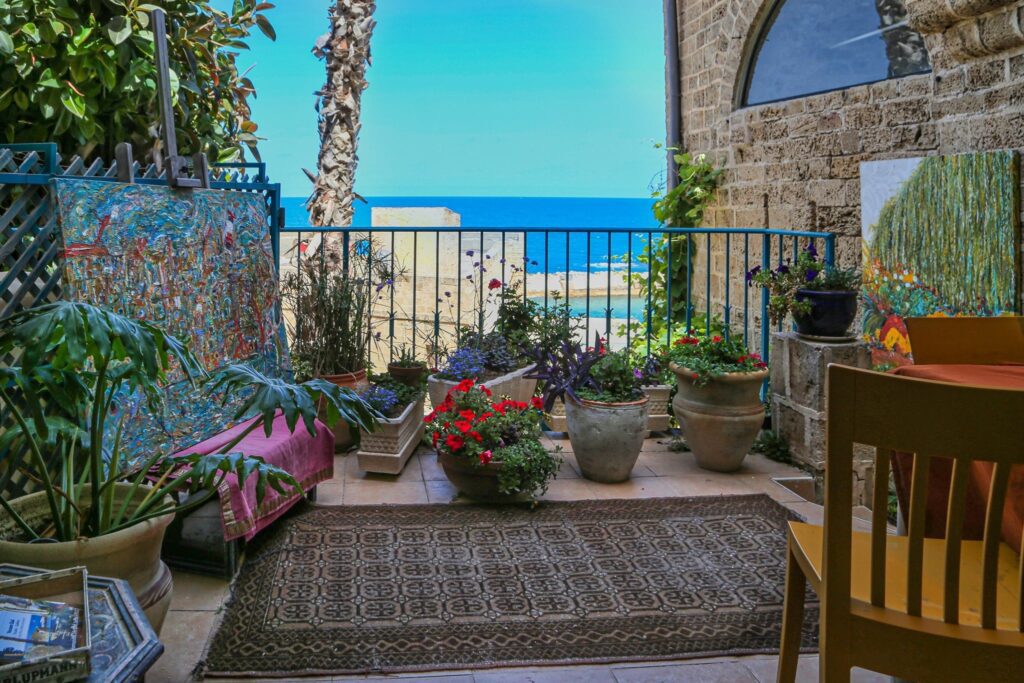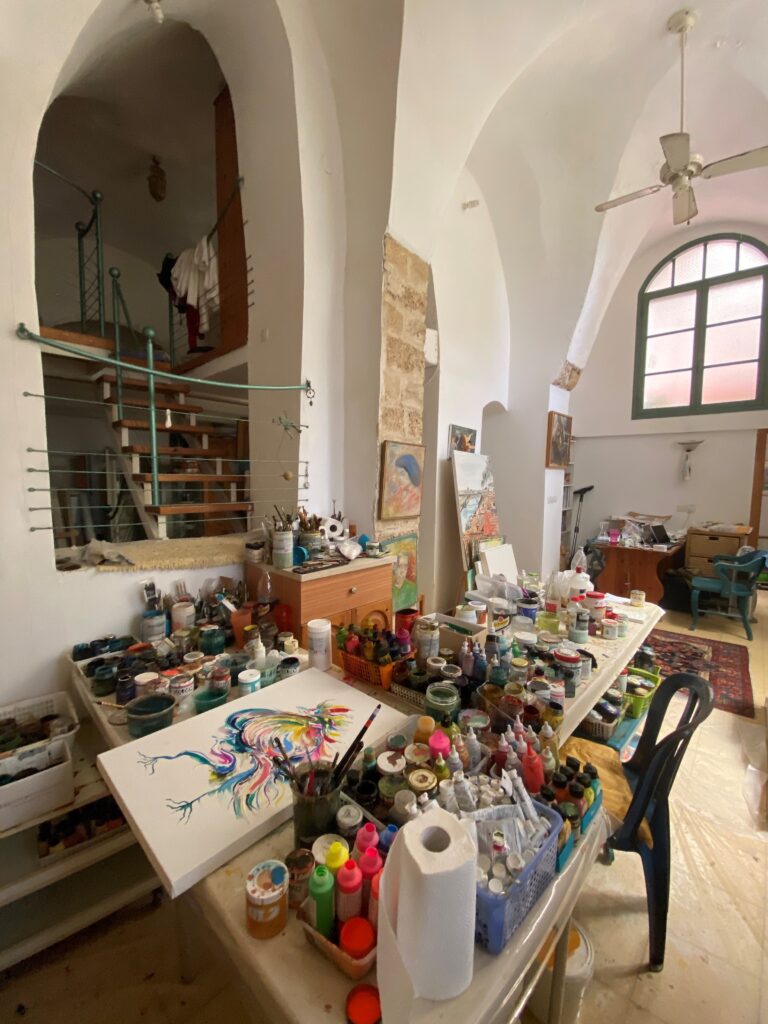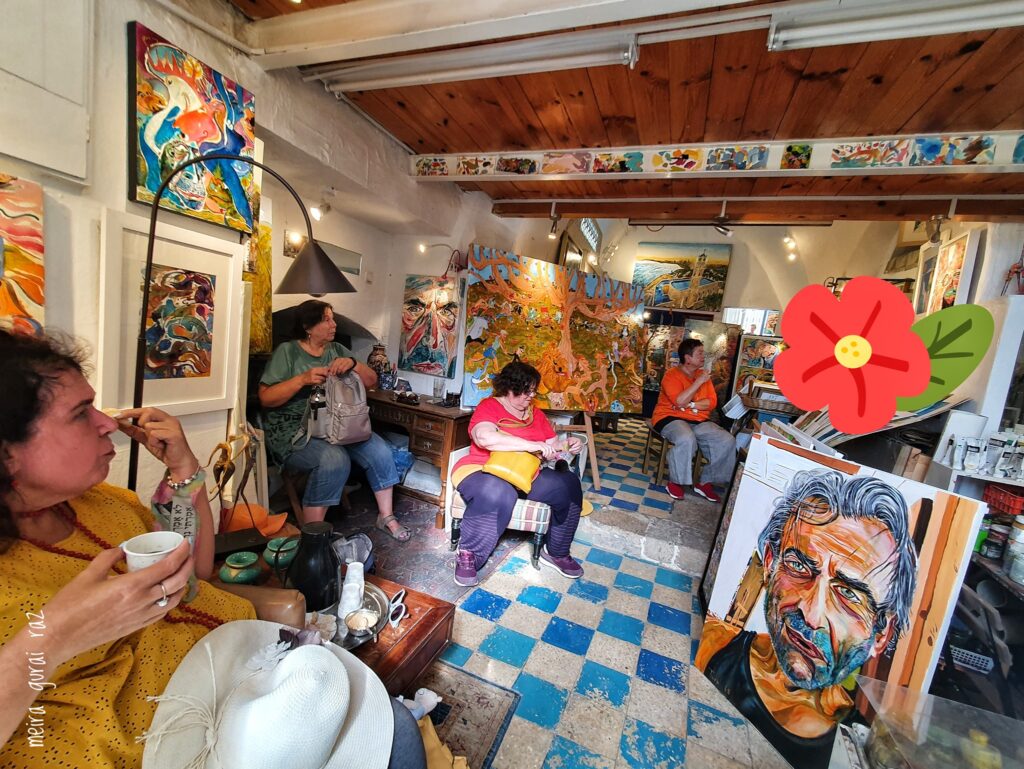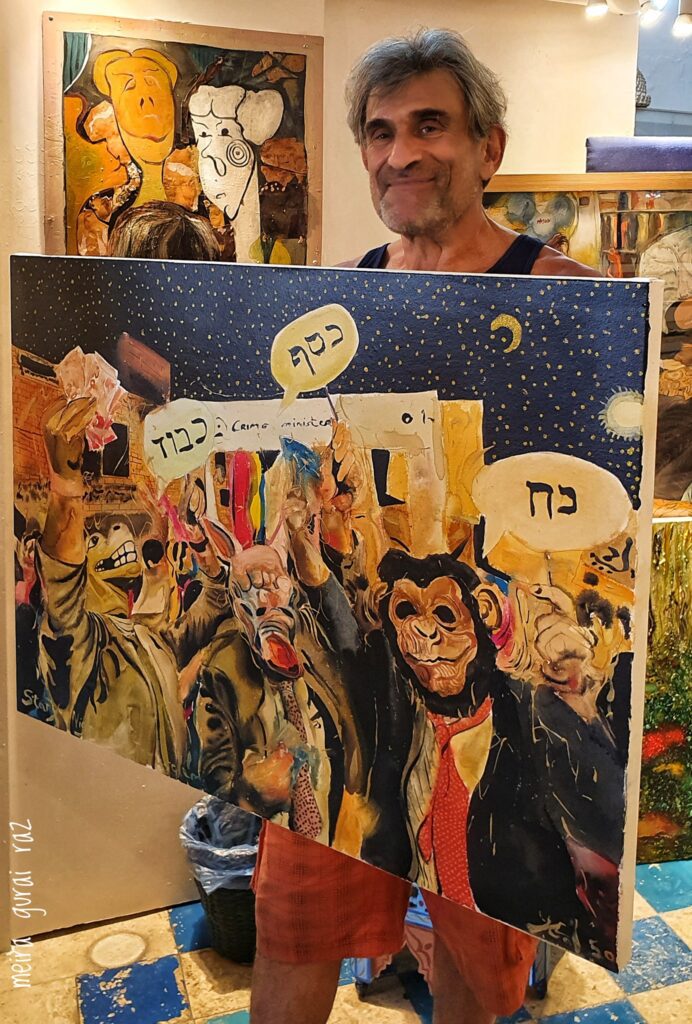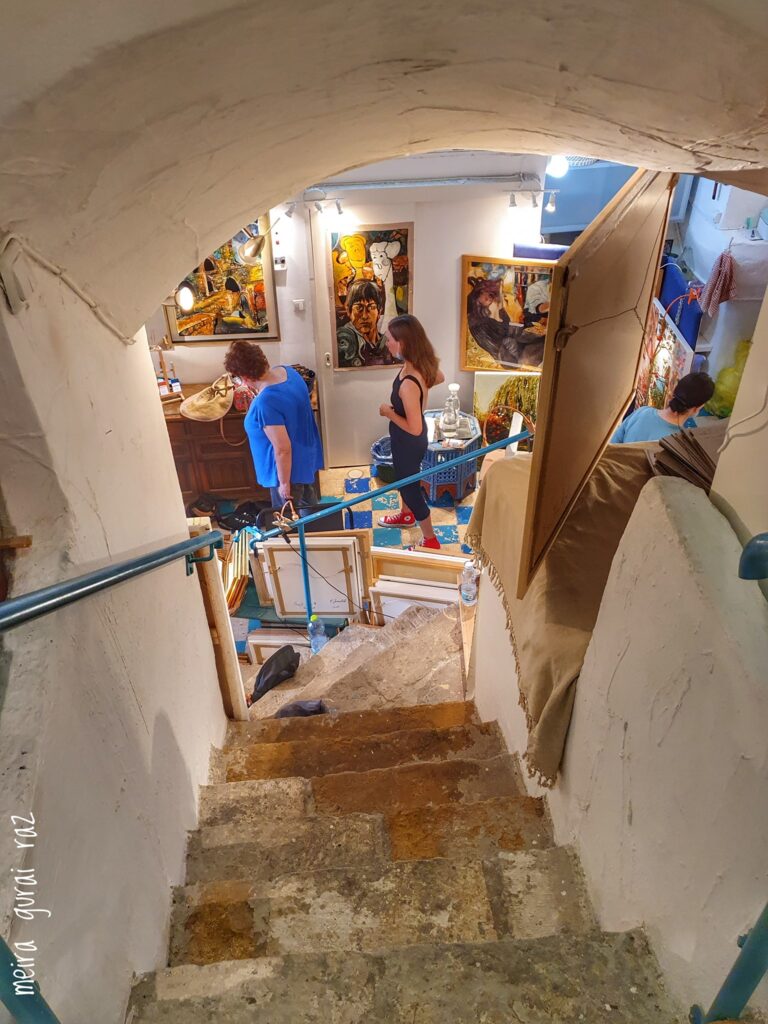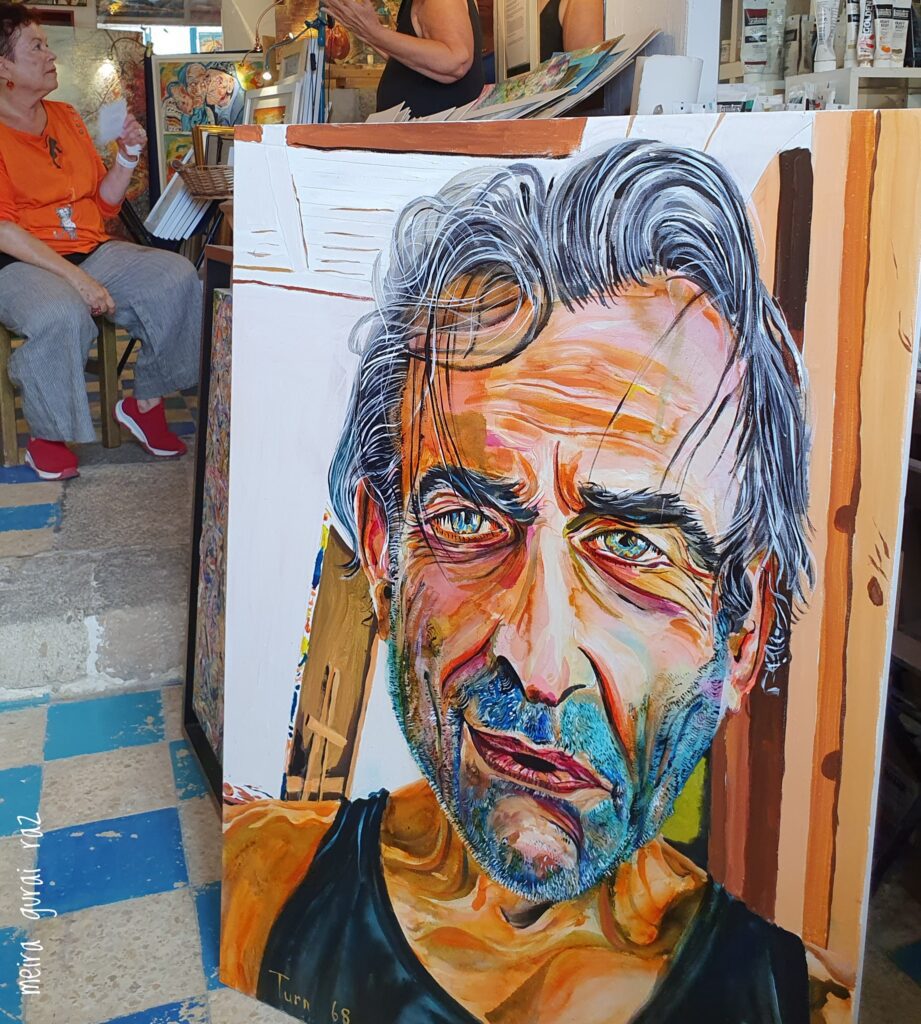I LOVE OLD JAFFA
I smile with joy when I walk around Old Jaffa, especially when the weather is glorious. Old Jaffa has 12 zodiac sign lanes. Each lane is a different zodiac sign and there’s one called Netiv HaMazalot and that’s where my studio gallery is located. It’s the longest lane about 300 meters long. Zodiac Fountain was made by my good friends, sculptors Varda Ghivoly and Ilan Gelber in 2011. It is located in Kikar Kedumim, also known as Square of the Ancient Ones. The character designs were created by sculptor Navot Gil.
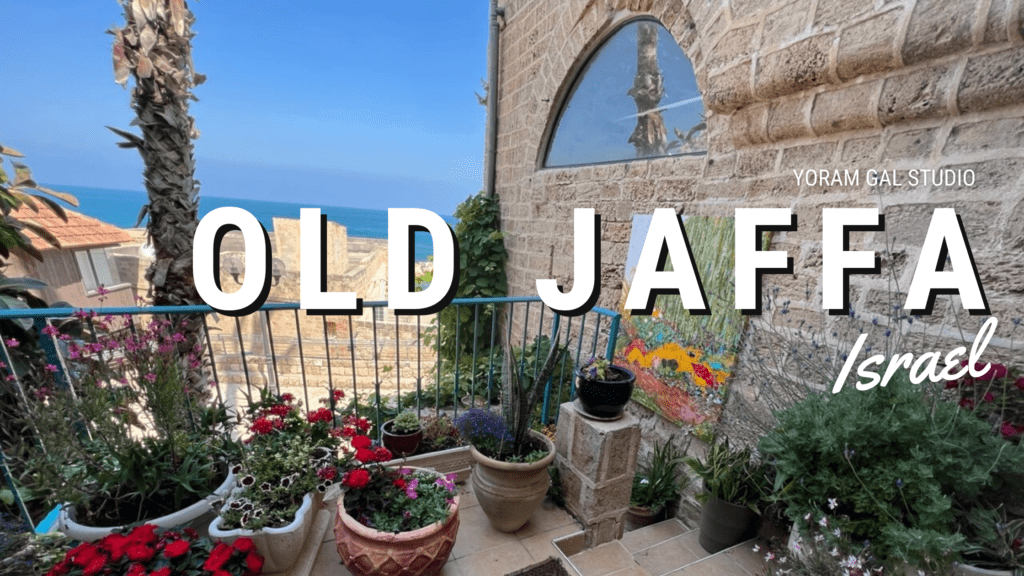
Follow Yoram Gal on Instagram and Facebook or contact by email or phone.
Jaffa, a municipality in the south of Tel Aviv, Israel, has one of the world’s oldest ports. Once known as the “Bride of the Sea” because of its location along the Mediterranean, it’s been in constant use for at least 7,000 years.
TouchPoint Israel
The History of Jaffa
Jaffa (or Yafo in Hebrew) has a longtime history. The earliest evidence of settlement in the area is from the Bronze Age, the 18th century BCE. Because it is situated on the coastline, it was an important Egyptian city. They used it as a port city for transporting their merchandise.
Jaffa is one of the most ancient port cities in the world. Many Biblical stories are connected to Jaffa’s port. The most famous is the story of Jonah, the prophet who wanted to escape God’s mission, got on a boat in Jaffa’s port, and sailed away. His boat got caught in a storm and he was swallowed by a “big fish,” probably a whale. After 3 days, he got out of it whole.
Another story mentioned in the Bible tells us about King Solomon, who imported the Cedars of Lebanon through Jaffa Port. Those cedars were intended for the building of the Holy Temple in Jerusalem.
Later, the Hasmoneans conquered Jaffa and turned it into a mixed settlement of Jews and non-Jews. Later, the Romans came during the First Jewish–Roman War and slaughtered its Jewish dwellers. When Jerusalem fell into Roman hands in 70 CE, Jaffa also fell in its importance because its port was no longer useful.
Many years later, Jaffa was destructed by the Mamluks sometime in the 13th century. Afterward, in the Ottoman period, the city was built again and Zahir al-Umar, the autonomous Arab ruler of Northern Palestine, built a wall around it. Then, Napoleon came in 1799 and destroyed the city again. It was rebuilt in the early 19th century by the Ottoman governor of Jaffa, “Abu Nabbut.” This time, it remained standing until today.
